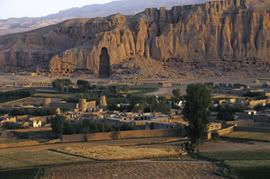(6 am – promoted by ek hornbeck)
The NGO network in Afghanistan (Agency Coordinating Body for Afghan Relief – ACBAR) reports that the number of civilian casualties caused by all sides has “surged” and that insecurity has spread to previously stable areas.
The number of insurgent attacks for each of the months of May (463), June (569) and July is greater than the number of such attacks in any other months since the end of major hostilities following the international intervention in 2001…
July was reportedly the worst month for Afghan civilians in the past six years, with 260 civilian casualties recorded…
Now, due primarily to a stepped up air operations, Afghanistan, “the good war” is turning bad.
 Michael Scheuer in an article in Asia Times Online (1 August 2008) writes about an al-Qaeda ‘revival’ in Afghanistan. The situation will certainly worsen, he writes, because of the growing anger over US air strikes in the FATA and the growing unity and anti-US/NATO attitudes being fomented among the Pashtun tribes on both sides of the Afghanistan-Pakistan border by those air attacks.
Michael Scheuer in an article in Asia Times Online (1 August 2008) writes about an al-Qaeda ‘revival’ in Afghanistan. The situation will certainly worsen, he writes, because of the growing anger over US air strikes in the FATA and the growing unity and anti-US/NATO attitudes being fomented among the Pashtun tribes on both sides of the Afghanistan-Pakistan border by those air attacks.
In a separate piece in Asia Times, also from 1 August, Conn Hallinan, writes about “the bad side to the ‘good war'”.
Iraq was sold as a war to halt weapons of mass destruction; then to overthrow Saddam Hussein, then to build democracy. In the end it was a fabrication built on a falsehood and anchored in a fraud.
But Afghanistan is the “good war”, aimed at “those who attacked us”, in the words of columnist Frank Rich. It is “the war of necessity”, asserts the New York Times, to roll back the “power of al-Qaeda and the Taliban”.
Despite Afghanistan being referred to as the “good war” there are serious questions as to its legality.
In a separate essay here I recently wrote about the results of a study by Rand Corporation which recently concluded that terrorist groups rarely cease to exist as a result of a military campaign and that most terrorist groups ended because of operations carried out by local police or intelligence agencies, or because they negotiated a settlement with their governments.
Conn Hallinan points out the potential pitfalls of a large scale military campaign and occupation in Afghanistan.
Once a population turns against an occupation (or just decides to stay neutral), there are few places in the world where an occupier can win. Afghanistan, with its enormous size and daunting geography, is certainly not one of them.
Now we hear both Senator McCain and Senator Obama speak of increasing the number of troops in Afghanistan. General David McKiernan, commander of the Nato led International Security Assistance Force (ISAF) in Afghanistan, says he needs more “resources”.
Hallinan reports that the US and NATO currently have about 60,000 troops in Afghanistan and that the Afghan army adds about 70,000 to that number. As for the civilian population, the situation has changed for the worse. Again from Hallinan’s article:
The initial US-led invasion in 2001 was easy because the Taliban had alienated themselves from the vast majority of Afghans. But the weight of occupation, and the rising number of civilian deaths, is shifting the resistance toward a war of national liberation, and no foreign power has ever won that battle in Afghanistan.
(emphasis is mine)
Will US policy makers take the recent Rand Corp. study to heart or will we see a continuation of the same failed tactics, that beset the former Soviet Union in Afghanistan, and the Americans in Southeast Asia?
There are times when one has to wonder what the real objectives are and why we continue to refuse to learn the lessons of history.

4 comments
Skip to comment form
Author